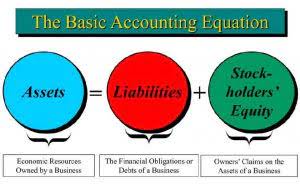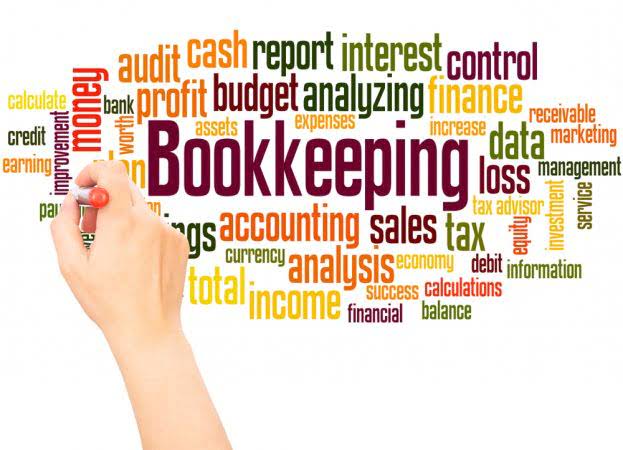
The formula for calculating the operating cycle is the sum of days inventory outstanding (DIO) and days sales outstanding (DSO). A company with an extremely short operating cycle requires less cash to maintain its operations, operating cycle and so can still grow while selling at relatively small margins. Conversely, a business may have fat margins and yet still require additional financing to grow at even a modest pace, if its operating cycle is unusually long.

How Does the Accounting Cycle Work?
A company’s accounting cycle and operating cycle are independent of each other with respect to the length of the cycles, but they are also closely related in terms of information flow between the two areas. At the end of an accounting period, before financial statements can be prepared, the accounts must be reviewed for potential adjustments. The unadjusted trial balance is a trial balance where the accounts have not yet been adjusted.
- The operating cycle is important for measuring the financial health of a company.
- LO6 – Explain the use of and prepare closing entries and a post-closing trial balance.
- The longer the operating cycle, the more cash is tied up in operations (i.e. working capital needs), which directly lowers a company’s free cash flow (FCF).
- Accrual accounting is the process of recognizing revenues when earned and expenses when incurred regardless of when cash is exchanged; it forms the basis of GAAP.
- The net operating cycle subtracts the days a company takes in paying its suppliers from the sum of days inventories outstanding and days sales outstanding.
- The operating cycle is equal to the sum of DIO and DSO, which comes out to 150 days in our modeling exercise.
- He has worked as an accountant and consultant for more than 25 years and has built financial models for all types of industries.
Accounting Cycle vs. Operating Cycle
- A company with an extremely short operating cycle requires less cash to maintain its operations, and so can still grow while selling at relatively small margins.
- After the closing entry is posted, the Dividends account is left with a zero balance and retained earnings is left with a credit balance of $1,857.
- In regards to accounting, operating cycles are essential to maintaining levels of cash necessary to survive.
- All of the assets in your business are turned into products/services/cash which is then turned back again.
Because plant and equipment assets are useful for more than one accounting period, their cost must be spread over the time they are used. For example, the $100,000 cost of a machine expected to be used over five years is not expensed entirely in the year of purchase because this would cause expenses to be overstated in Year 1 and understated in Years 2, 3, 4, and 5. Therefore, the $100,000 cost must be spread over the asset’s five-year life.
Generating unadjusted trial balance report
The accounting cycle is the holistic process of recording and processing all financial transactions of a company, from when the transaction occurs, to its representation on the financial statements, to closing the accounts. One of the main duties of a bookkeeper is to keep track of the full accounting cycle from start to finish. The cycle repeats itself every fiscal year as long as a company remains in business. The post-closing trial balance is prepared after the closing entries have been posted to the general ledger.
- The net book value of the equipment on the balance sheet is shown as $2,975 ($3,000 – $25).
- 11 Financial may only transact business in those states in which it is registered, or qualifies for an exemption or exclusion from registration requirements.
- An adjusted trial balance reports account balances after adjusting entries have been recorded and posted.
- It is important to realize that in this formula inventory is the average of the beginning and ending inventory.
- Accumulated depreciation records the amount of the asset’s cost that has been expensed since it was put into use.
- The expense accounts are closed in one compound closing journal entry to the Income Summary account.
The operating cycle of a business
This cash-to-cash sequence of transactions is commonly referred to as an operating cycle and is illustrated in Figure 3.1. Get instant access to video lessons taught by experienced investment bankers. Learn financial statement modeling, DCF, M&A, LBO, Comps and Excel shortcuts. Hence, the cash conversion cycle is used interchangeably with the term “net operating cycle”. The operating cycle is also known as the cash-to-cash cycle, the net operating cycle, and the cash conversion cycle.
2 Adjusting Entries

Companies with longer operating cycles often have to borrow from banks in order to pay short term liabilities. The average time it takes for a retailer’s or manufacturer’s inventory to turn to cash. If a manufacturer turns its inventory six times per year (every two months) and allows customers to pay in 30 days, its operating cycle is approximately three months. Subtracting the accumulated depreciation account balance from the Plant and Equipment asset account balance equals the carrying amount or net book value of the plant and equipment asset that is reported on the balance sheet. If the adjustment was not recorded, unearned repair revenue would be overstated (too high) by $300 causing liabilities on the balance sheet to be overstated.
A cost is recorded as an expense if it will be used or consumed during the current period to earn revenue. This distinction between types of cost outlays is illustrated in Figure 3.3. Depending on the type of business, an operating cycle can vary in duration from short, such as one week (e.g., a grocery store) to much longer, such as one year (e.g., a car dealership).
How to Clear Old Transactions in QuickBooks
For the past 52 years, Harold Averkamp (CPA, MBA) has worked as an accounting supervisor, manager, consultant, university instructor, and innovator in teaching accounting online. The articles and research support materials available on this site are educational and are not intended to be investment or tax advice. All such information is provided solely for convenience purposes only and all users thereof should be guided accordingly. What this means is that investing in operational process improvement can help reduce costs, increase speed, and improve quality, which will likely lead to increased profits at the end of the day.
Ask Any Financial Question

This means that it would take a retailer an entire year to sell its inventory. Depending on the industry, this kind of an inventory turn might be unacceptable. If a company is able to keep a short operating cycle, its cash flow will consistent and the company won’t have problems paying current liabilities. Where DIO and DSO stand for days inventories outstanding and days sales outstanding, respectively. Days inventories outstanding equals the average number of days in which a company sells its inventory.

Which of these is most important for your financial advisor to have?
A shorter cycle is preferred and indicates a more efficient and successful business. A shorter cycle indicates that a company is able to recover its inventory investment quickly and possesses enough cash to meet obligations. For instance a retailer’s operating cycle would be the time between buying merchandise inventory and selling the same inventory. A manufacturer’s operating cycle might start when the company spends money on raw manufacturing materials to make a product.
